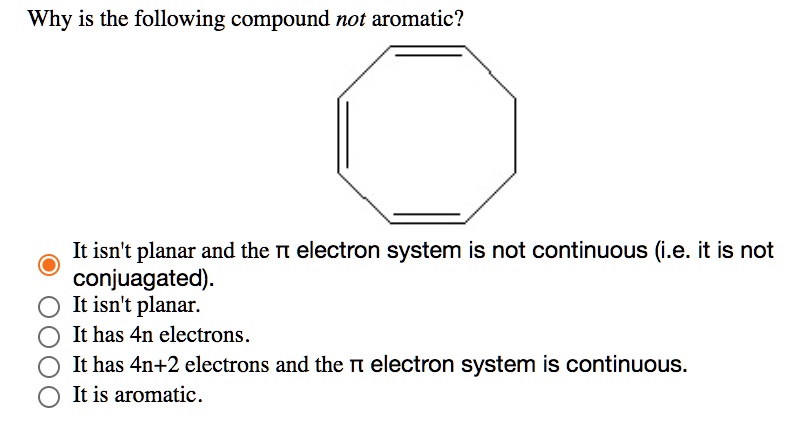
SOLVED: Why is the following compound not aromatic? It isntt planar and the TT electron system is not continuous (i.e: it is not conjuagated): It isn't planar: It has 4n electrons It

In order for a ring system to be aromatic it must have (4n+2) pi electrons. Explain how the allowed energies for a particle in a ring can be used to justify this

Chemistry - Hückel's Rule (4n+2 rule): In order to be aromatic, a molecule must have a certain number of pi electrons (electrons with pi bonds, or lone pairs within p orbitals) within

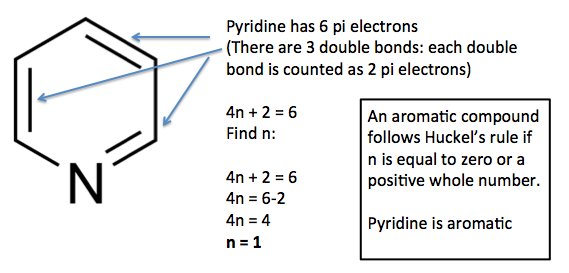
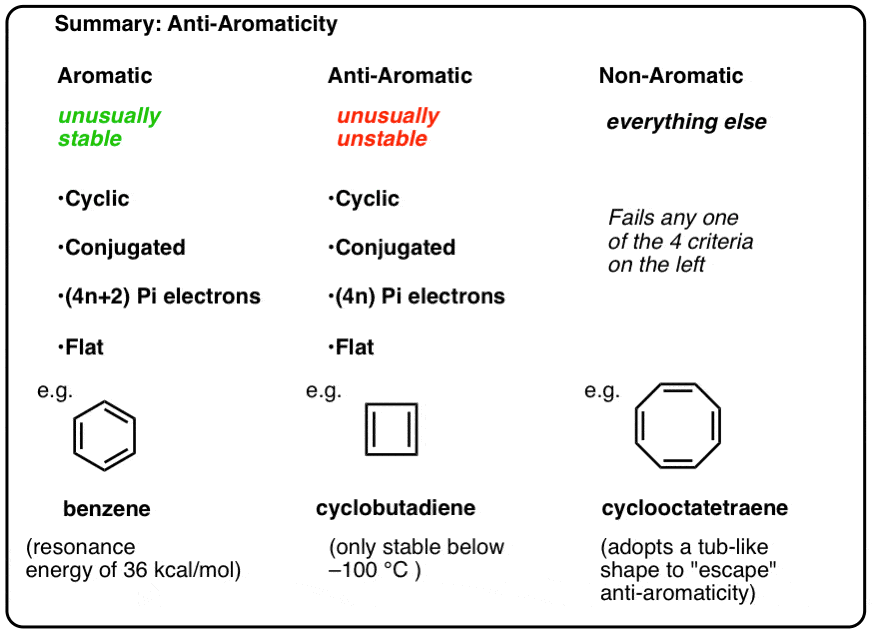
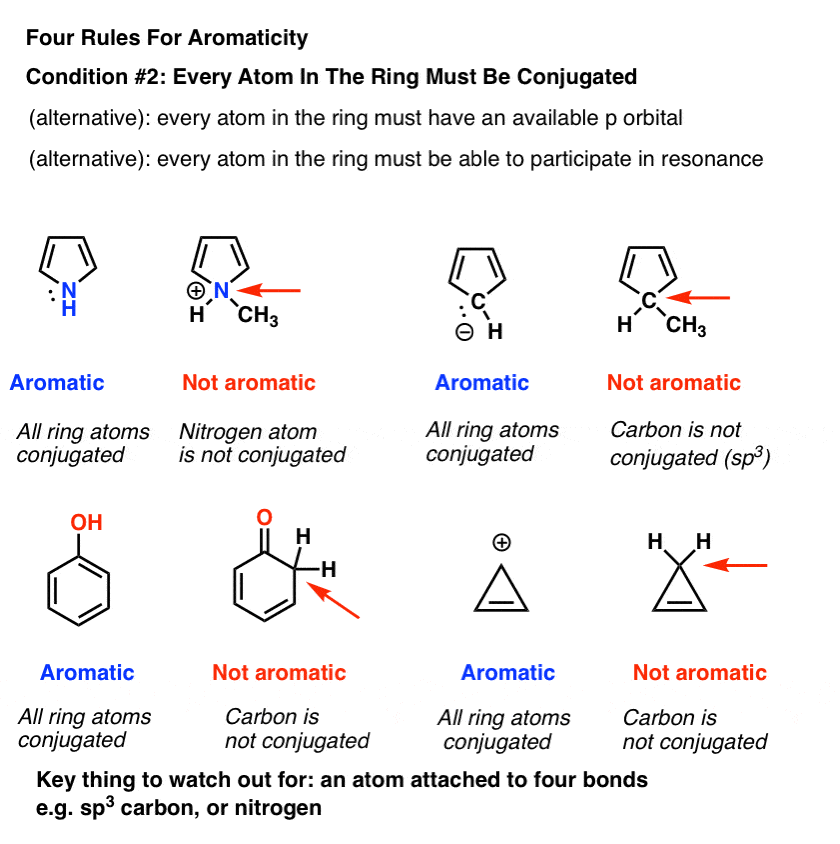

.jpg?revision=1)



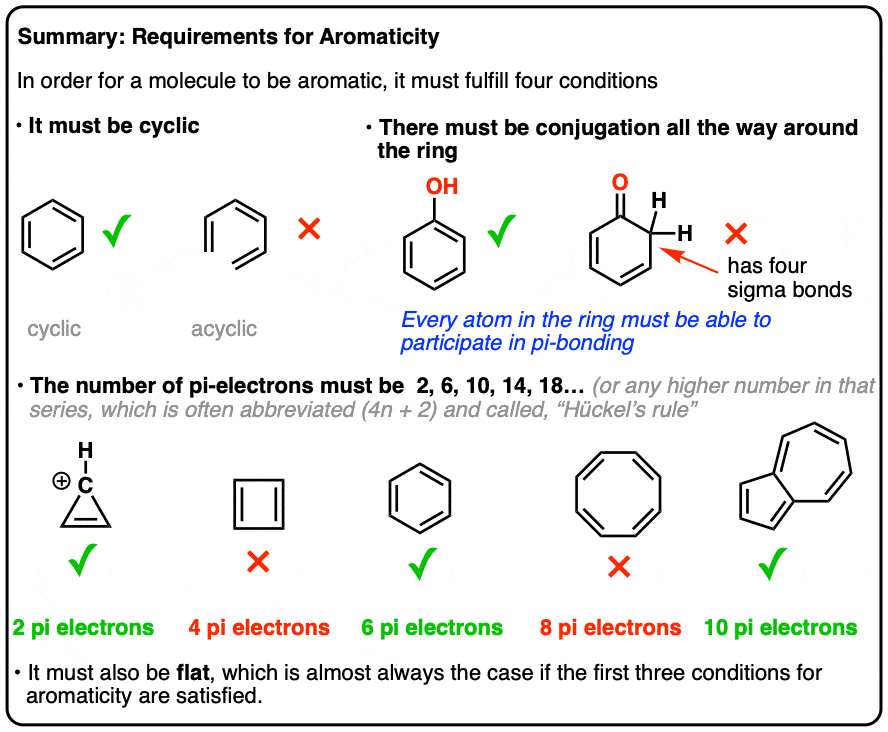
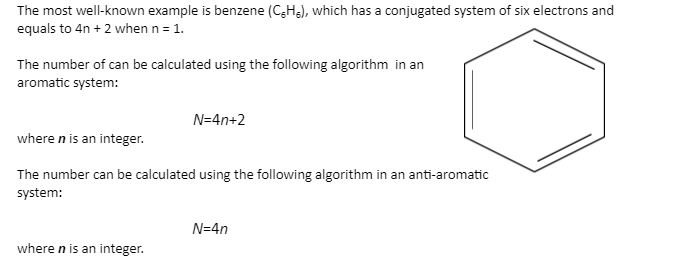





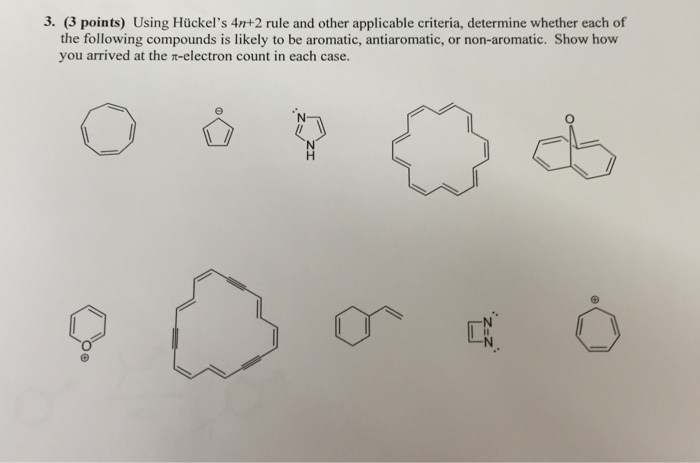
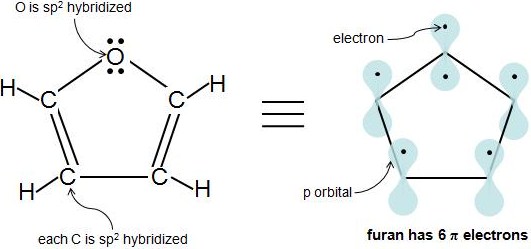.jpg?revision=1&size=bestfit&width=369&height=173)


